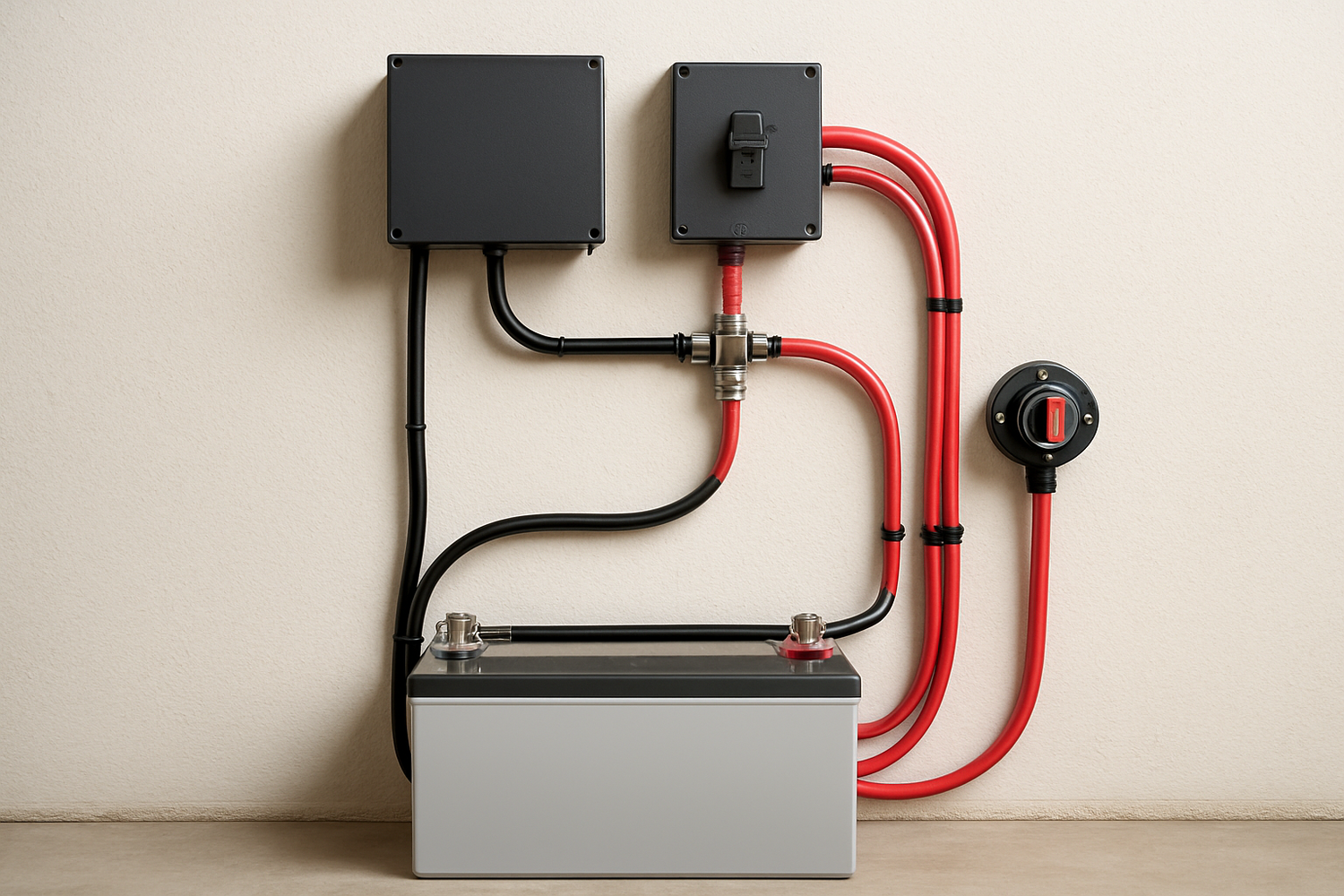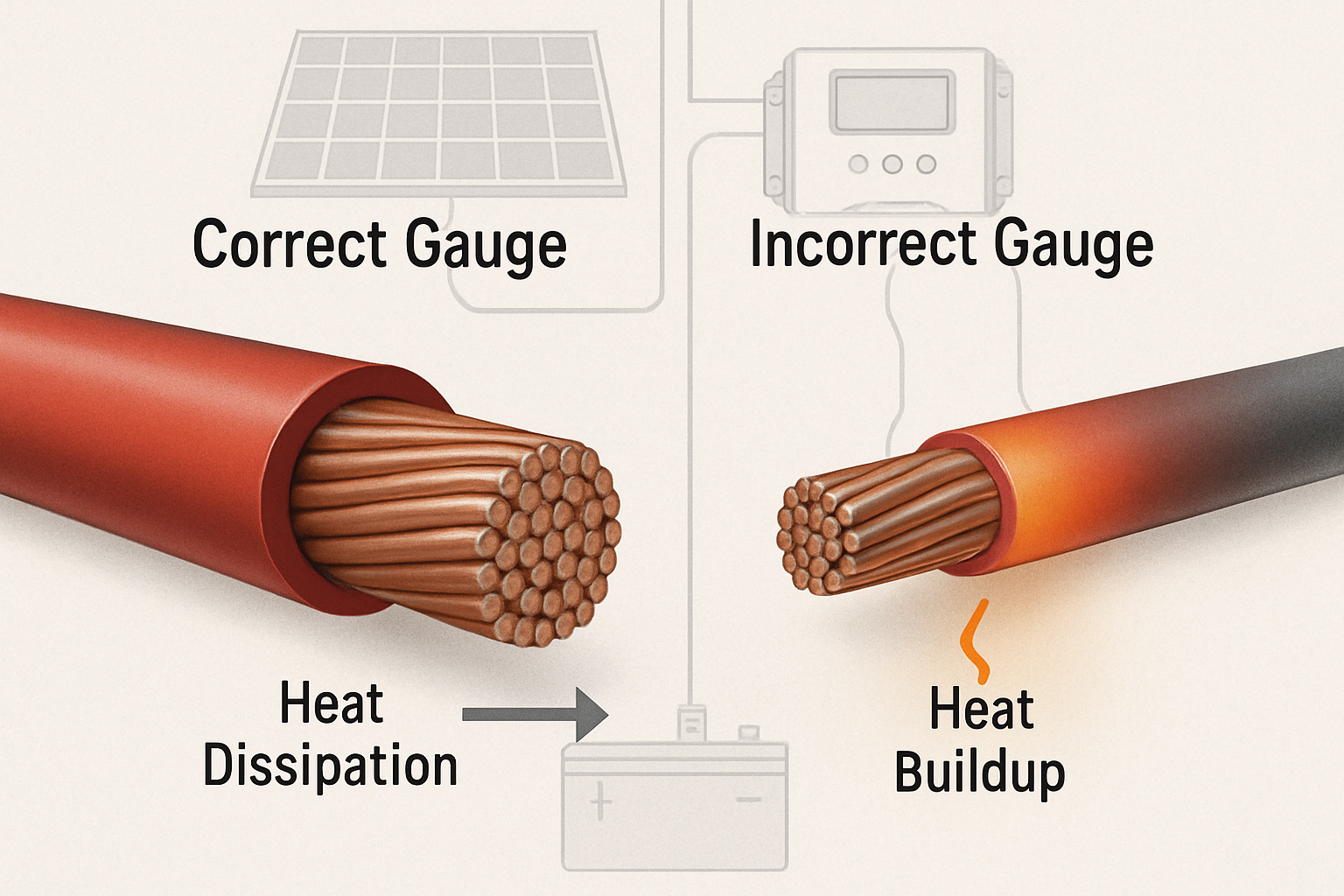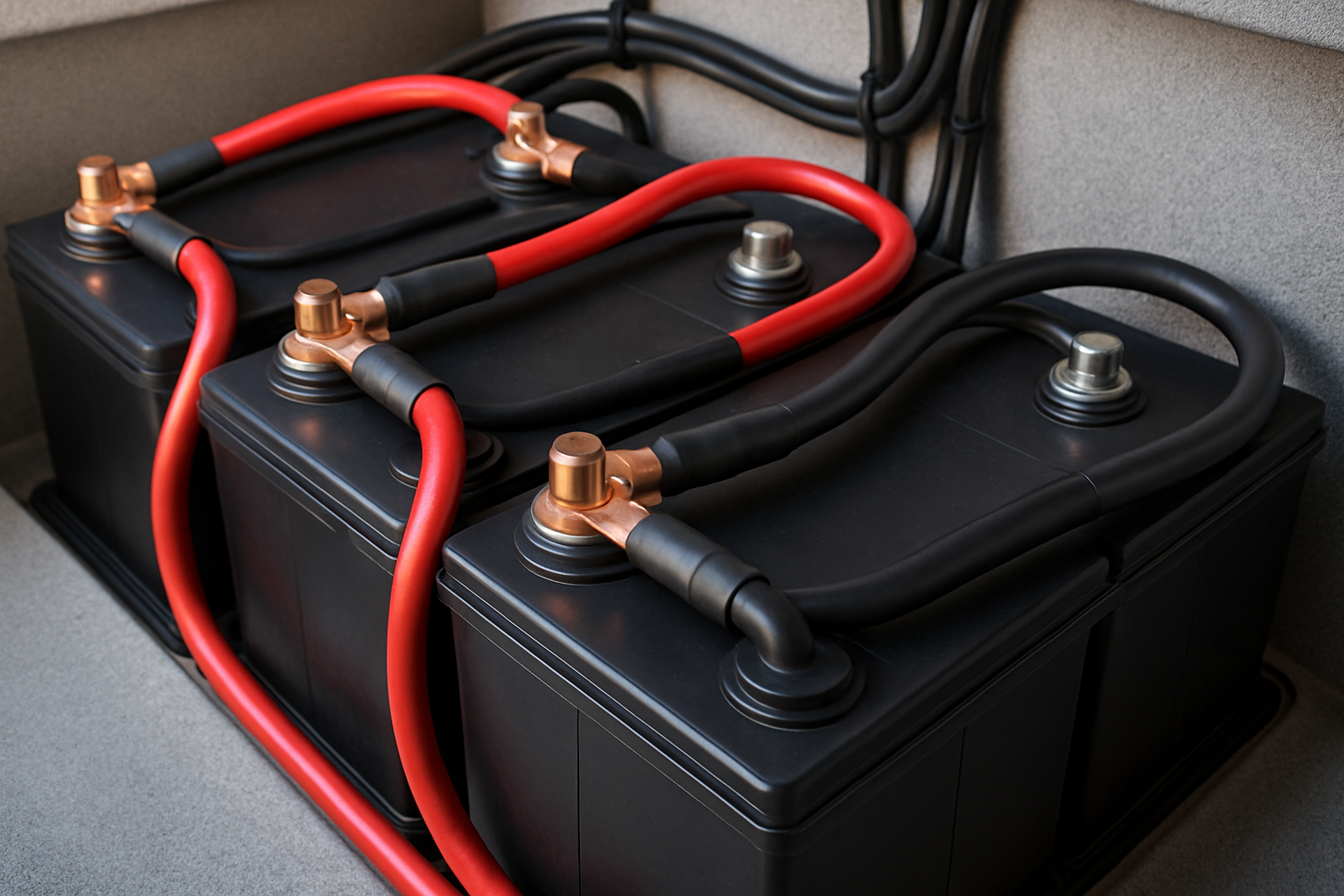Properly wiring your solar battery bank is the foundation of a safe, efficient, and long-lasting energy storage system. It goes beyond simply connecting terminals; it involves strategic configuration, precise cable selection, and robust protection. A well-designed setup not only safeguards your investment but also ensures you get the most out of every amp-hour stored. This guide provides the technical details for creating a secure and high-performing solar power system.
Foundational Wiring Configurations: Series vs. Parallel
The way you connect your batteries determines the overall voltage and capacity of your energy storage bank. Understanding the difference between series and parallel connections is the first step in designing a system that meets your specific energy needs.
Series Connections: Increasing Voltage
A series connection involves linking batteries end-to-end, connecting the positive terminal of one battery to the negative terminal of the next. This configuration adds the voltage of each battery together while keeping the amp-hour (Ah) capacity the same as a single battery. For example, connecting four 12V 100Ah batteries in series creates a 48V 100Ah battery bank. This method is common for systems that require higher voltage to operate more efficiently, such as many modern solar inverters.
Parallel Connections: Increasing Capacity
In a parallel connection, you link all the positive terminals together and all the negative terminals together. This method increases the total amp-hour capacity of the bank while the voltage remains the same as a single battery. Using the same four 12V 100Ah batteries, a parallel connection results in a 12V 400Ah bank. This setup is ideal when you need to extend the runtime of your system without altering its voltage.
Series-Parallel Connections: A Hybrid Approach
For larger systems, you can combine both methods. A series-parallel connection allows you to increase both voltage and capacity simultaneously. For instance, you could create two sets of two batteries wired in series (creating two 24V 100Ah strings) and then connect those two strings in parallel. The result would be a 24V 200Ah battery bank. This flexible approach enables the design of custom battery banks for nearly any application.
Selecting the Right Wires and Cables
Wires are the arteries of your solar power system. Using correctly sized cables is critical for safety and performance. Undersized wires can overheat, creating a fire hazard, and cause significant voltage drop, which reduces the efficiency of your entire system.
Understanding Wire Gauge (AWG)
Wire thickness is measured by the American Wire Gauge (AWG) standard. A lower AWG number indicates a thicker wire, which can safely handle more current. Choosing the right gauge prevents energy loss and protects your equipment. As noted in the Solar Energy Perspectives report, wiring and electrical protection are key parts of the 'balance of system' (BOS), and their quality directly impacts overall performance.
Factors Influencing Wire Size Selection
Several factors determine the appropriate wire size for your solar battery wiring:
- Current (Amperage): This is the primary consideration. The wire must be thick enough to handle the maximum current that will flow through it from your inverter or charge controller.
- Cable Length: Longer cable runs lead to greater resistance and voltage drop. To compensate, you may need to use a thicker wire for long distances between the battery bank and the inverter.
- Voltage Drop: This is the loss of voltage that occurs as electricity flows through a wire. For optimal performance, it is best to keep voltage drop below 3%. A higher drop means wasted energy and can cause some appliances to function improperly.
- Temperature Rating: Wires have a maximum operating temperature. The ambient temperature of your installation environment can affect a wire's ability to dissipate heat, potentially requiring a thicker gauge in hotter climates.
| Current (Amps) | Max Cable Length for <3% Voltage Drop (12V System) | Recommended AWG |
|---|---|---|
| 50A | 10 feet | 6 AWG |
| 100A | 10 feet | 2 AWG |
| 150A | 10 feet | 1/0 AWG |
| 200A | 10 feet | 4/0 AWG |
Essential Protection Devices for Your Battery Bank
A multi-layered approach to protection is crucial for safeguarding your battery bank and your home. These devices act as critical safety nets, preventing damage from electrical faults and ensuring the system operates within safe limits.
Overcurrent Protection: Fuses and Circuit Breakers
Overcurrent protection devices (OCPDs) are non-negotiable. Their job is to instantly interrupt the flow of electricity during a short circuit or overload condition, preventing catastrophic failure and potential fires. A fuse contains a small piece of wire that melts and breaks the circuit permanently when excessive current passes through. A circuit breaker is a mechanical switch that trips and can be manually reset. Both should be correctly sized based on the wire gauge they are protecting, not the battery's maximum output.
The Role of a Battery Management System (BMS)
For lithium-based batteries like LiFePO4, a Battery Management System (BMS) is an essential component. It is the brain of the battery, actively monitoring and managing its health. A BMS protects the cells from over-charging, over-discharging, and extreme temperatures. It also performs cell balancing to ensure all cells in the pack are at an equal state of charge, which significantly extends the battery's lifespan and maintains its performance. According to research from the U.S. Department of Energy, advanced system controls are vital for enhancing solar system performance and safety, a role the BMS fulfills at the battery level. You can see how these components affect overall system output by reviewing data on the ultimate reference for solar storage performance, which shows how optimized components contribute to better energy yields.
Disconnect Switches
A disconnect switch allows you to manually isolate the battery bank from the rest of the system. This is crucial for performing safe maintenance, troubleshooting issues, or shutting down the system in an emergency. The switch should be easily accessible and rated to handle the full voltage and current of your system.
Putting It All Together: A System Blueprint
A logical and clean installation is just as important as using the right components. Following best practices ensures reliability and makes future maintenance straightforward.
A Step-by-Step Wiring Diagram Concept
The standard connection order for a safe system is: Battery Bank -> Main Fuse/Breaker -> Disconnect Switch -> Inverter. The main fuse or circuit breaker should always be placed as close as possible to the battery's positive terminal. This minimizes the length of unprotected cable, which is the most vulnerable part of the circuit. As highlighted by IRENA's work on electrification with renewables, reliable system design is fundamental to delivering consistent power, a principle that starts with correct component layout.
Best Practices for Secure Connections
Your system is only as strong as its weakest link. Ensure all electrical connections are secure.
- Use high-quality, properly sized cable lugs for all terminations.
- Invest in a proper crimping tool to ensure a solid, low-resistance connection between the wire and the lug.
- Tighten all terminals to their specified torque values. Loose connections can generate heat and cause arcing.
- Maintain clear color coding, using red for positive and black for negative, to prevent accidental polarity reversal.
- Organize cables neatly using ties and conduits to prevent strain and abrasion.
Final System Checks and Safety Measures
Building a robust solar battery system is a meticulous process where attention to detail pays off. By correctly configuring your batteries, selecting the right size wires, and implementing layers of protection, you create an energy storage system that is not only powerful but also fundamentally safe. This approach ensures your system will provide reliable, clean energy for years to come.
Disclaimer: This guide provides general information and is not a substitute for professional electrical advice. Always consult a qualified installer and adhere to all local electrical codes, standards, and regulations. Any investment in an energy system involves inherent risks.
Frequently Asked Questions
Can I mix old and new batteries in the same bank?
It is strongly discouraged. Mismatched batteries, whether in age or capacity, can lead to severe imbalances. This causes the newer batteries to overcharge while the older ones over-discharge, dramatically reducing the safety and lifespan of the entire bank. Always build a battery bank with identical batteries purchased at the same time.
How close should the fuse be to the battery?
The main fuse or circuit breaker should be installed as close as practically possible to the positive terminal of the battery bank. The goal is to minimize the length of unprotected wire, which is the most common location for a fault to cause a fire. Many standards recommend within 7 inches (18 cm).
What is the difference between wiring for a 12V and a 48V system?
For the same amount of power, a 48V system operates at a lower current (Amps) than a 12V system because Power = Voltage x Current. This lower current allows you to use thinner, more affordable wires. It also reduces resistive energy losses in the wiring, leading to a more efficient overall system. This is a key reason why many larger residential energy storage systems are designed for 48V.





Leave a comment
All comments are moderated before being published.
This site is protected by hCaptcha and the hCaptcha Privacy Policy and Terms of Service apply.